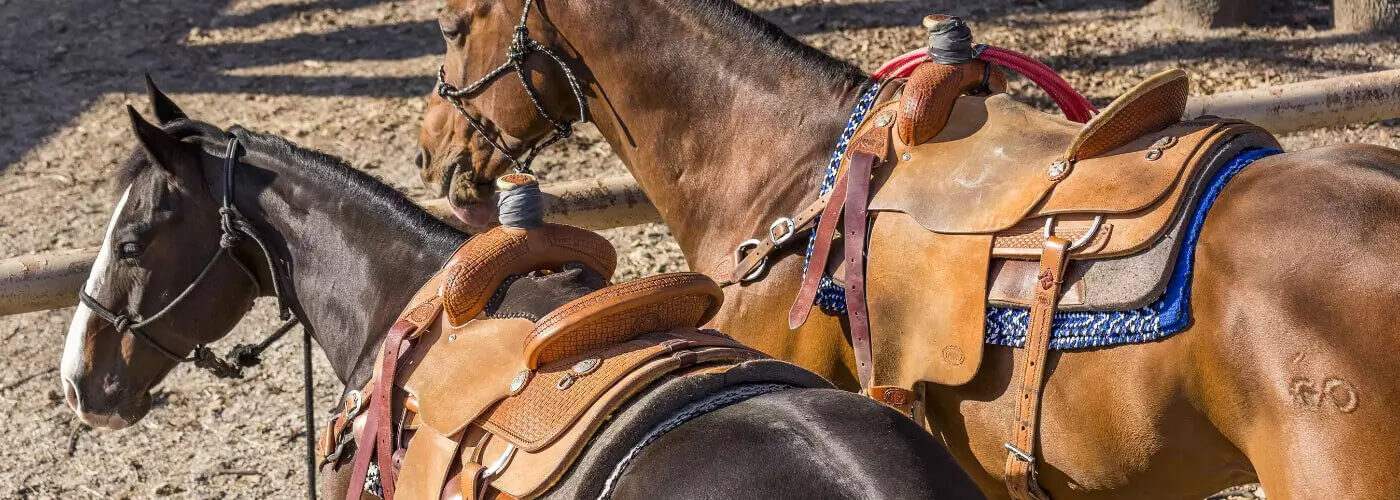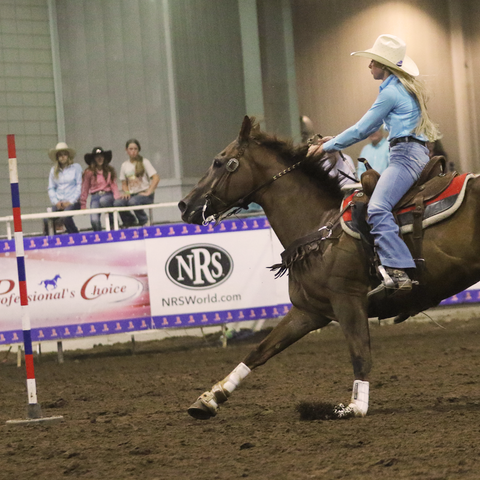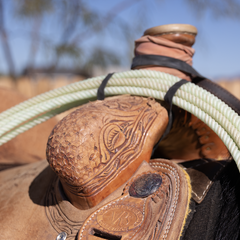
Ultimate Saddle Fitting Guide: How To Size a Western Saddle for Your Horse
Are you trying to figure out how to size a saddle for your horse but aren't quite sure where to start? We can help you out. A proper saddle fit is absolutely critical and will increase the performance of your horse and the enjoyment of your ride. NRS' saddle fit guide will go over the basics of how to fit a saddle properly to ensure that your horse is comfortable to give you the best ride, whether you're competing, working, or out on a trail ride.

Proper saddle fit will maximize your horse's comfort and performance and can help decrease behavioral problems. Your horse's saddle should allow uninhibited movement and performance while keeping the rider comfortable and able to give clear cues. Taking the time to make sure your saddle fits properly will help keep your horse willing and comfortable during your ride.
Why Is a Proper Saddle Fit Important?
When trying to imagine how the wrong saddle fit feels, think about wearing a pair of shoes that is too big, too small or so short that it pinches your toes. Not only will your feet hurt, but you might also resist working, start limping, grow stiff, get sores or even cause permanent damage. Having an ill-fitting saddle is much the same.

What Size Saddle Do I Need?
The saddle seat size refers to rider fit and does not have anything to do with fitting the horse, but it's still important because if the saddle doesn't fit the rider, it will affect their balance and effectiveness in the saddle. There used to be some general guidelines that said if you can fit three fingers (about four inches) between your thigh and the saddle's swell, and you can hold your hand vertically between the cantle and your seat, your saddle fits you perfectly. That's not really the case anymore. Ropers and barrel racers are typically riding smaller saddles than in the past. This helps the rider stay more in the middle of their horse, helping them not get behind their horse in a turn or when it's time to throw the rope. Those that ride cutters, reiners, and cowhorses will tend to ride a larger saddle than those competing in the speed events. And if you're trail riding, you should ride whatever seat makes you feel the most comfortable.
How to Compare Saddles
When asking yourself, "Which saddle do I need?" the first thing you need to do is determine what type of withers your horse has; high withers, mutton withers, or just good withers. From there, you can figure out which gullet width will best fit your horse. NRS uses a common gullet width of 6.75" in our NRS Competitor Series Saddles. The combination of bar angle and gullet width is a key component to making sure your saddle fits properly. A more round backed horse, also referred to as mutton withered, is typically going to require a wider gullet, and maybe a more flat bar angle, than a horse with average or high withers.
How to Fit a Saddle to a Horse
Each horse is unique, so figuring out the correct western saddle sizing can be a challenge. Here are some key considerations when determining how to fit a western saddle to a horse:
Skirt Length - The saddle skirt should ideally end before the point of the hip.
Saddle Width - The width of the saddle is determined by the size of the gullet. You want the gullet to sit off the withers and be wide enough to not pinch, but narrow enough to not sit too low and restrict shoulder movement
To test your fit, place the saddle directly on your horse's back without a pad. From there, you want to test the saddle for rock from front to back. This will help you determine if the width is correct, along with grabbing the horn like you were going to get on and seeing what kind of slippage, if you have any, by moving the saddle from side to side. You can also run your hand between your horse and the under side of the saddle to see where it's making contact with your horse.
How to Measure a Western Saddle Gullet
The gullet is the tunnel below the swells that runs along the horse's withers. This space allows the horse's shoulders and back to move freely. Your saddle should sit flush on your horse's back, and the front of your saddle should be positioned behind the withers. Make sure the bars don't pinch. If it's too narrow, the saddle will pinch the horse's back. If it's too wide, the saddle can slip or rub and cause your horse to have a sore back and not perform to their fullest. You are going to want some at least two fingers of space between your horse and the underside of the swells, so be able to see a bit of light shining through the gullet when looking from the seat of the saddle to the front of the horse.

Unfortunately, when it comes to getting a true measurement on a gullet, it can only be done before the saddle is completed around the tree. On a new saddle, most of the specifications are readily available. When it comes to purchasing a used saddle, especially online, you will have a little more homework to do. Fortunately, most quality manufacturers have their specs available for each style of saddle they build, and some even mark their saddles with a serial number in order to keep track of each individual saddle.
In general, a gullet size of anywhere from 6.5"-7" is going to fit the majority of horses and can be padded accordingly. Anywhere either side of those measurements are typically custom saddles, with a narrower gullet fitting a higher withered horse and a wider gullet being more for a round-backed, mutton-withered horse. When you purchase a saddle from NRS, you can be assured that your satisfaction is of utmost importance and is reflected in our return/exchange policy, as we are horsemen too and understand the importance of riding a quality saddle for you and your horse.
Signs of an Ill-fitting Western Saddle
Horses can't speak if the saddle you're riding doesn't fit well, but there will be signs. Here are some things to look for that may indicate a poor saddle fit:
- Resistance to cues
- Becoming short strided
- Irritability showing as tail swishing or ear pinning
- White hairs suddenly appearing
- Back swelling after the saddle is removed
- Thickened skin or scars in the saddle area
- You can also run your thumb and pointer finger along your horse's back after a ride and test for any kind of tenderness
Now that you've been through our fitting guide, it's time to pick one out from our extensive inventory of new and used saddles. NRS has many options for roping, ranch. barrel racing, pleasure riding, youth saddles and more. No matter the type of riding you'll be doing and the build of your horse, we are sure to have something to fit your needs at NRS.
If you still have questions, just give us a call at 800-467-6746, and our team will be glad to help!

